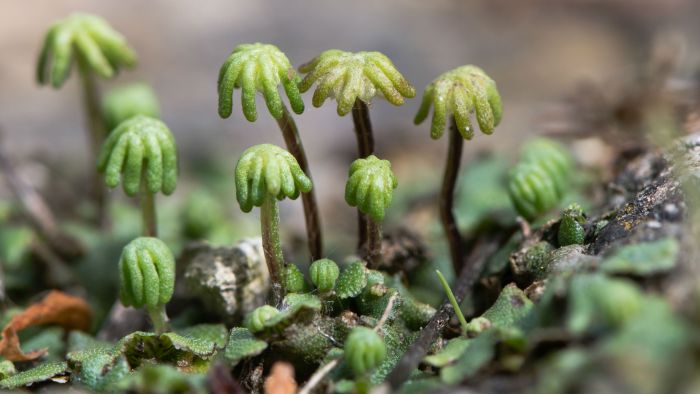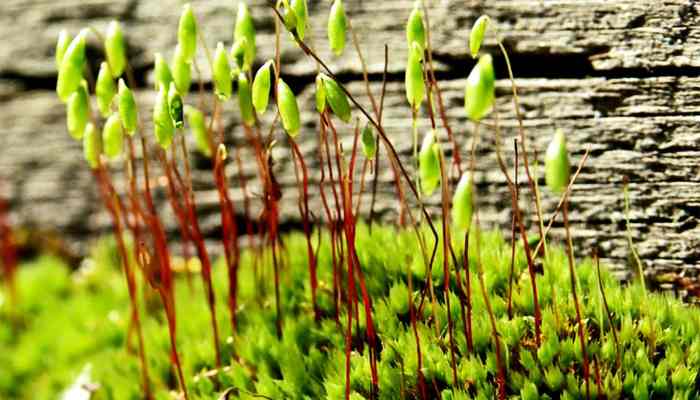First plant on earth crossword takes center stage, inviting us on an enthralling journey through the annals of time to discover the genesis of plant life on our planet. This crossword puzzle delves into the captivating narrative of the first plant, shedding light on its profound impact on Earth’s ecosystem and the evolution of life as we know it.
From its humble beginnings to its far-reaching consequences, the first plant holds a pivotal place in the tapestry of Earth’s history. Join us as we piece together the clues, uncovering the secrets of this enigmatic organism that shaped our planet’s destiny.
Plant Biology and Evolution

The emergence of plants on Earth marked a pivotal moment in the planet’s history. The first plants, though simple in structure, paved the way for the intricate and diverse plant kingdom we witness today.
The evolution of plants has been a gradual process spanning millions of years. The first plants likely evolved from photosynthetic bacteria, which had the ability to harness sunlight to convert carbon dioxide and water into organic compounds.
Significance of the First Plant
The first plant on Earth had a profound impact on the planet’s ecosystem. It introduced a new source of food for herbivores, providing sustenance for the development of animal life.
The first plant on Earth is a fascinating topic that sparks curiosity. If you’re interested in learning more about chemistry, unit 2 worksheet 1 chemistry provides a comprehensive resource. Delving into the world of chemistry can help you understand the intricacies of chemical reactions and their impact on our world.
But don’t forget to come back to the enigma of the first plant on Earth and uncover its captivating story.
Moreover, plants played a crucial role in shaping the atmosphere. Through photosynthesis, they released oxygen into the atmosphere, gradually making it habitable for aerobic organisms.
Adaptations of the First Plant
The first plant had to adapt to the harsh conditions of the early Earth. It possessed unique characteristics that allowed it to thrive in its environment:
- Simple Structure:The first plants were likely simple in structure, lacking specialized tissues or organs.
- Photosynthesis:They had the ability to photosynthesize, using sunlight to produce their own food.
- Cuticle:They developed a waxy cuticle on their surfaces, which helped prevent water loss and provided protection from the harsh environment.
li> Anchoring System:They developed rudimentary anchoring systems to secure themselves in the soil.
Historical Significance

The discovery of the first plant on Earth is a pivotal moment in understanding the history of life on our planet. It provides insights into the origins of photosynthesis, the process that sustains most life forms on Earth, and the evolution of complex organisms.
Discovery and Identification
The earliest evidence of plant life on Earth dates back to around 3.5 billion years ago. These fossils, known as stromatolites, are layered structures formed by the accumulation of cyanobacteria, a type of photosynthetic bacteria. Cyanobacteria are believed to be the ancestors of all modern plants, and their discovery has helped scientists trace the origins of plant life on Earth.
Scientific Methods and Techniques
To determine the age and origin of the first plants, scientists use various scientific methods and techniques. These include:
- Carbon dating:This technique measures the amount of radioactive carbon-14 in fossils to determine their age.
- Fossil analysis:By studying the morphology and structure of fossils, scientists can identify the characteristics that distinguish plants from other organisms.
- Molecular analysis:Comparing the DNA and RNA of modern plants with that of fossils can help determine the evolutionary relationships between different species.
Implications for Earth’s History and the Origins of Life
The discovery of the first plant on Earth has significant implications for our understanding of Earth’s history and the origins of life. It suggests that life on Earth originated in the oceans, and that photosynthesis evolved early in the history of the planet.
This discovery also provides evidence for the theory of endosymbiosis, which proposes that mitochondria and chloroplasts, the energy-producing organelles in eukaryotic cells, originated as free-living bacteria that were engulfed by larger cells.
Environmental Impact

The first plant played a pivotal role in shaping the Earth’s atmosphere and climate. Its photosynthetic processes released oxygen into the atmosphere, a crucial step in the formation of the ozone layer. This protective layer shielded the planet from harmful ultraviolet radiation, enabling the development of complex life forms.
Availability of Nutrients and Resources
The plant’s photosynthetic activity also contributed to the availability of nutrients and resources for other organisms. Through the process of photosynthesis, the plant absorbed carbon dioxide and released oxygen, creating an environment conducive to the growth of other plants and animals.
Cultural and Societal Significance
The first plant on Earth holds profound cultural and societal significance, deeply entwined with human history and beliefs.
Throughout the ages, plants have been a source of sustenance, medicine, and shelter, shaping human civilization and fostering a deep connection between humans and the natural world.
Representation in Art, Literature, and Mythology, First plant on earth crossword
Plants have been a prevalent motif in art, literature, and mythology across cultures. From the lush landscapes of Renaissance paintings to the symbolic use of plants in ancient myths, they have served as a source of inspiration and representation.
- In ancient Egypt, the lotus flower was revered as a symbol of rebirth and the sun.
- In Greek mythology, the olive tree was sacred to Athena, goddess of wisdom and war.
- In Japanese art, cherry blossoms represent the beauty of life and the transience of existence.
Role in Religious Beliefs and Spiritual Practices
Plants have played a significant role in religious beliefs and spiritual practices. From the sacred fig tree in Hinduism to the use of incense in Buddhist ceremonies, they have been integral to rituals, ceremonies, and spiritual experiences.
- In the Bible, the Tree of Knowledge symbolizes the forbidden fruit that led to the fall of humanity.
- In Native American traditions, tobacco is used in ceremonies to honor ancestors and connect with the spirit world.
- In many cultures, plants are believed to possess healing properties and are used in traditional medicine.
Ongoing Research and Future Perspectives: First Plant On Earth Crossword

Ongoing research on the first plant on Earth continues to deepen our understanding of its biology, evolution, and significance. Recent advancements in genomic sequencing, molecular biology, and paleontological techniques have provided new insights into the plant’s characteristics and its role in shaping the planet’s history.
Genomic Sequencing and Molecular Biology
Genomic sequencing of ancient plant fossils has revealed the genetic makeup of the first plant and its close relatives. This information has enabled researchers to reconstruct the plant’s evolutionary history and identify genes responsible for its unique adaptations. Molecular biology techniques have also been used to study the plant’s photosynthetic pathways, nutrient uptake mechanisms, and other metabolic processes.
Paleontological Discoveries
New paleontological discoveries have shed light on the distribution and ecology of the first plant. Fossil records from various locations around the world have provided evidence of its presence in diverse environments, from shallow marine habitats to terrestrial ecosystems. These findings have helped researchers reconstruct the plant’s dispersal patterns and its interactions with other organisms.
Future Research Directions
Future research directions in the study of the first plant on Earth include:
- Investigating the plant’s adaptations to extreme environments, such as high levels of salinity, temperature, and radiation.
- Exploring the role of the plant in the formation of early ecosystems and the evolution of life on Earth.
- Utilizing computational modeling to simulate the plant’s growth and dispersal patterns under different environmental conditions.
Essential FAQs
What is the significance of the first plant on Earth?
The first plant on Earth played a crucial role in shaping the planet’s atmosphere and ecosystem. Its photosynthetic processes contributed to the development of oxygen and the formation of the ozone layer, making it possible for other life forms to thrive.
How was the first plant on Earth discovered?
The first plant on Earth was discovered through the study of fossils and geological formations. Scientists have used radiometric dating and other techniques to determine the age and origin of these fossils, providing insights into the early history of plant life.
What are the characteristics of the first plant on Earth?
The first plant on Earth was likely a simple organism, possibly resembling modern-day algae or mosses. It had the ability to photosynthesize, converting sunlight into energy, and possessed adaptations that allowed it to survive in the harsh conditions of the early Earth.